You will need:
- Red cabbage
- Kettle with boiling water (and adult help!)
- Heatproof container for the cabbage leaves
- Strainer
- Gloves
- Knife (and adult help!)
- Chopping board
- Clear cups
- Bicarbonate soda
- Water
BTW: If you have access to Universal Indicator for use in place of red cabbage, the results are even more vibrant
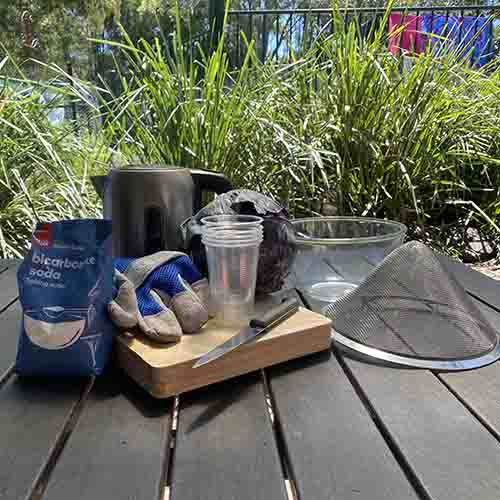
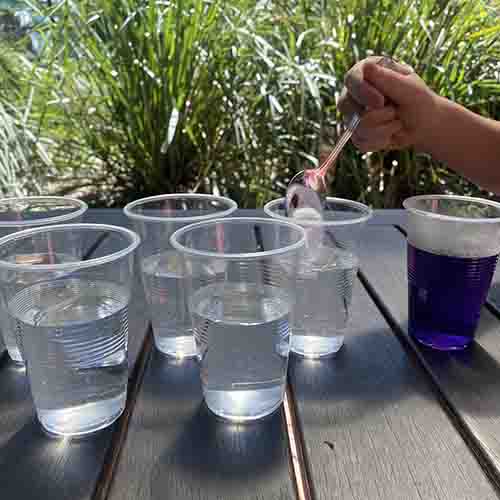
Set up 5 cups in a row. Add water to each cup and stir in a spoon of bicarbonate soda into one of them. Allow any extra bicarbonate soda to settle so others don’t see it when you do the experiment (ideally, you should dissolve all of the bicarbonate soda so no-one can see it!).
The bicarbonate soda represents the “infection”.
As a variation, you could use vinegar instead. In this case the purple cabbage juice will turn bright pink.
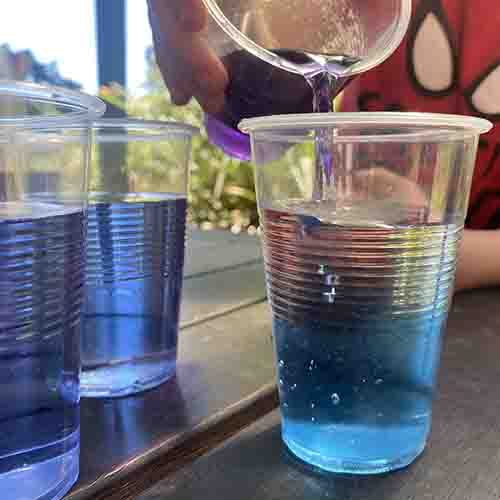
Pour the cabbage juice into the bicarbonate soda mixture… it turns a green colour! This is because of the red pigment in the cabbage, also known as anthocyanin, which responds to differences in pH. In this case, the cabbage juice turns green/aqua in the presence of an alkaline substance. (more about garden indicators here).
The green/aqua colour represents a positive test for infection.
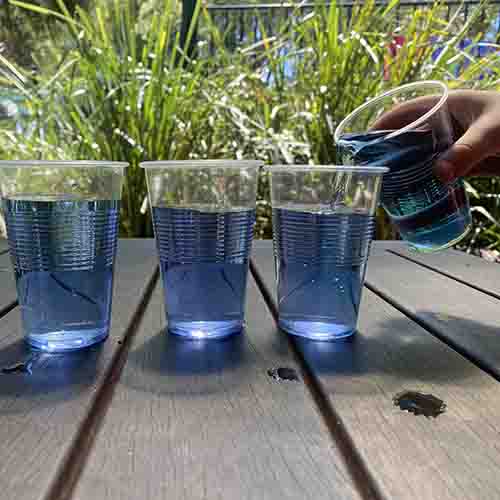
Now pour small amounts of the green bicarbonate soda solution into the other 4 cups of purple cabbage juice… they now turn green too! This shows that we can make all of the cups alkaline by moving bicarbonate soda through all of the cups.
This can be used as an analogy of how infection spreads due to contact between people.
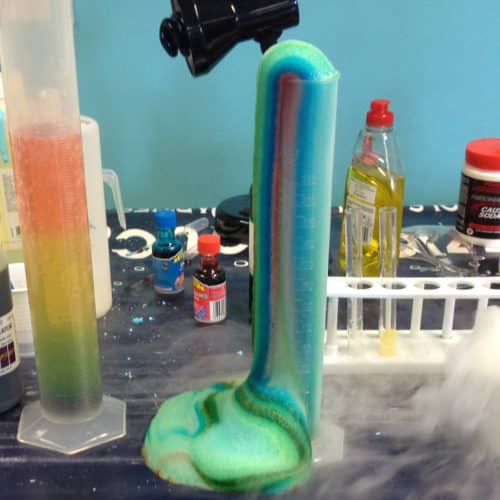
School science visits since 2004!
– Curriculum-linked & award-winning incursions.
– Over 40 primary & high school programs to choose from.
– Designed by experienced educators.
– Over 2 million students reached.
– Face to face incursions & online programs available.
– Early learning centre visits too!

Get the Unit of Work on the human body here!
- Learn about the major body systems
- Dive into the five senses
- How does digestion, respiration, circulation and many other processes work and more!
Includes cross-curricular teaching ideas, student quizzes, a sample marking rubric, scope & sequences & more
More on pandemics
A pandemic is the worldwide spread of a new disease. Importantly, a pandemic is declared when a new disease for which people do not have immunity spreads around the world beyond expectations. The disease has to cross multiple borders and then create infection between people within those countries to be a candidate to be declared a pandemic.
At the time of writing, March 13 2020, a pandemic has been declared with COVID-19 outbreak, (see World Health Organisation speech from March 11, 2020). A pandemic is declared when a new disease for which people do not have immunity spreads around the world beyond expectations. Originating in China, this disease has made its way to over 100 countries and sadly is impacting both the health of people and the worldwide economy.
Controlling the spread of disease
This is dependent on the type of disease and its method of transmission. In the case of COVID-19, advice as of March 13, 2020 is to:
- avoid contact with people (keeping a distance of 1 metre at least),
- wash hands thoroughly with soap for at least 20 seconds (or use an alcohol-based hand wash),
- cover your nose and mouth when coughing and sneezing with tissue or a flexed elbow
- avoid close contact with anyone with cold or flu-like symptoms.
Podcast for students about the Coronavirus
Coronavirus is here and it can be both scary and confusing. What even are viruses and what makes coronavirus different?
In the podcast episode below, we conduct an experiment about how viruses can be transmitted from person to person, and how you can prevent getting infected.
Teaching about the human body? From the 5 senses to the skeletal system, the Human Body workshop has you covered!
Get in touch with FizzicsEd to find out how we can work with your class.
Science Virtual Excursions Worldwide
Grades K to 12
Anywhere in the world!
Many shows & workshops
45 to 60 minutes
Human Body
Years 3 to 6
Maximum 30 students
School workshop (NSW only)
60 or 90 minutes
Online Class Available
STEM Full Day Accelerator - Primary
Designed from real classroom experiences, this modular day helps you create consistently effective science learning that directly address the new curriculum with easily accessible and cost-effective materials.
Chemistry Show
Years 3 to 6
Maximum 60 students
Science Show (NSW & VIC)
60 minutes
Online Class Available
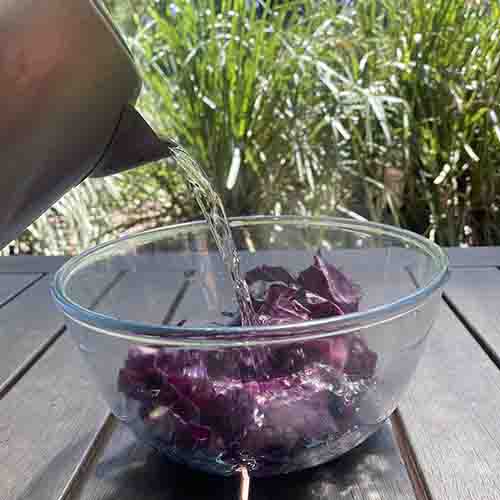
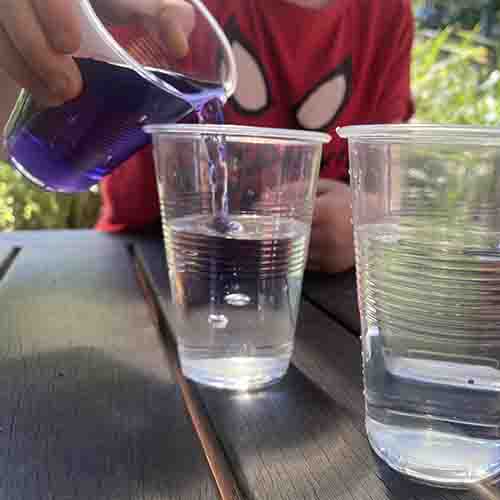

























Nice
how does it work?
Hi Joshua!
The purple colour in the cabbage juice contains a pigment called anthocyanin. This pigment changes colour in the presence of acidic or alkaline solutions. In the activity, you modelled the spread of a pandemic by using this colour change as an analogy for a spreading pathogen.
Any other vegetable besides red cabbage I could use?
Hi Peggy! You can use any vegetable that has pigment that changes colour in different pH levels.
Try some blueberries, blackberries, purple grape juice or beetroot!